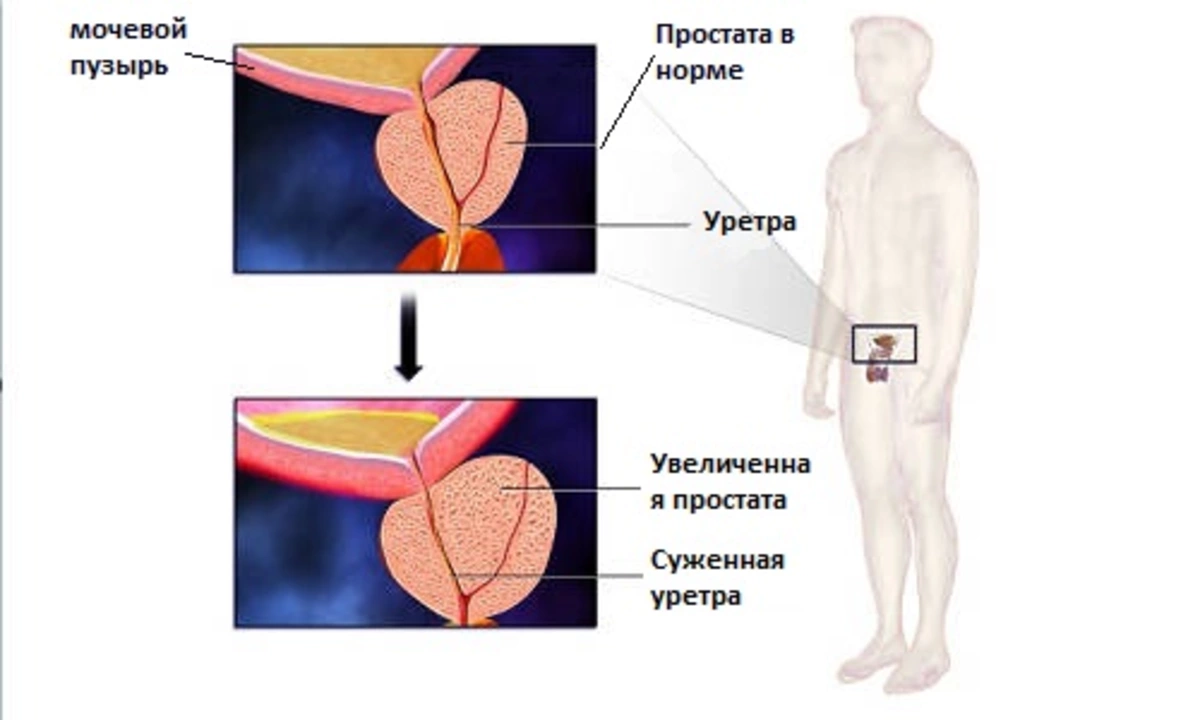Benign Prostatic Hyperplasia (BPH): What to Watch For and What to Do
Half of men in their 60s have some prostate enlargement. That sounds scary, but enlargement doesn't always mean danger. What matters is how much it affects your life. If you wake up multiple times at night to pee, strain to start, or feel like your bladder never fully empties, read on for clear, practical steps.
Symptoms & Diagnosis
Common signs are a weak urine stream, urgency, frequent trips to the toilet, dribbling after urination, and waking at night to pee. Less common but urgent signs: sudden inability to urinate, visible blood in urine, fever with urinary problems, or repeated urinary infections. Any of those need prompt medical attention.
Your doctor will usually start with a brief history and a digital rectal exam. Expect a urine test to rule out infection, and often a PSA blood test to check prostate markers. Ultrasound or urinary flow tests may be used if the problem is significant or treatment is being planned.
Treatment Options & Practical Tips
Not everyone needs immediate treatment. Mild symptoms can be watched with regular checks and simple changes: avoid caffeine and alcohol in the evening, cut down on fluids before bed, and try timed voiding to reduce urgency. Tracking symptoms with a short score like IPSS helps you and your doctor decide when to act.
Medications are the first step for many. Alpha blockers such as tamsulosin or alfuzosin relax the prostate neck and bladder outlet to improve flow—benefits show quickly, usually days to weeks. 5-alpha reductase inhibitors such as finasteride or dutasteride shrink prostate tissue but take months to work and may reduce PSA levels. Some men use both together when symptoms are worse or the prostate is large.
All drugs have downsides. Alpha blockers can cause lightheadedness and fainting when standing up quickly. 5-alpha reductase inhibitors can affect libido or ejaculation. Talk openly with your doctor about side effects and sexual concerns.
If meds fail or the prostate causes complications, procedures range from minimally invasive to surgical. UroLift and Rezum are office-based options with faster recovery and less sexual side effect risk. Transurethral resection of the prostate (TURP) is the long-standing option for more severe blockage and reliably improves flow, but recovery is longer and sexual side effects are possible.
Simple precautions: avoid decongestants and some antihistamines if you have severe BPH, since they can make retention worse. Strengthening pelvic floor muscles can help bladder control for some men. Keep regular follow-up to monitor symptoms, kidney function, and PSA if needed.
If symptoms are disrupting sleep, work, or mood, that’s a good reason to see a urologist. With the right mix of lifestyle changes, medicines, or a minimally invasive procedure, most men find meaningful relief and get back to normal nights and days.
The Importance of Mental Health Support for Men with Benign Prostatic Hyperplasia
As a blogger, I cannot emphasize enough the importance of mental health support for men dealing with Benign Prostatic Hyperplasia (BPH). BPH can have a profound impact on a man's quality of life, leading to urinary problems, sleep disturbances, and even depression. It's crucial for men to have access to mental health support to help them cope with the challenges and frustrations associated with this condition. Through therapy, support groups, and open conversations with loved ones, men can better navigate their BPH journey and maintain a positive outlook. Let's not forget that mental well-being plays a crucial role in overall health, making it essential for us to prioritize and address it.

